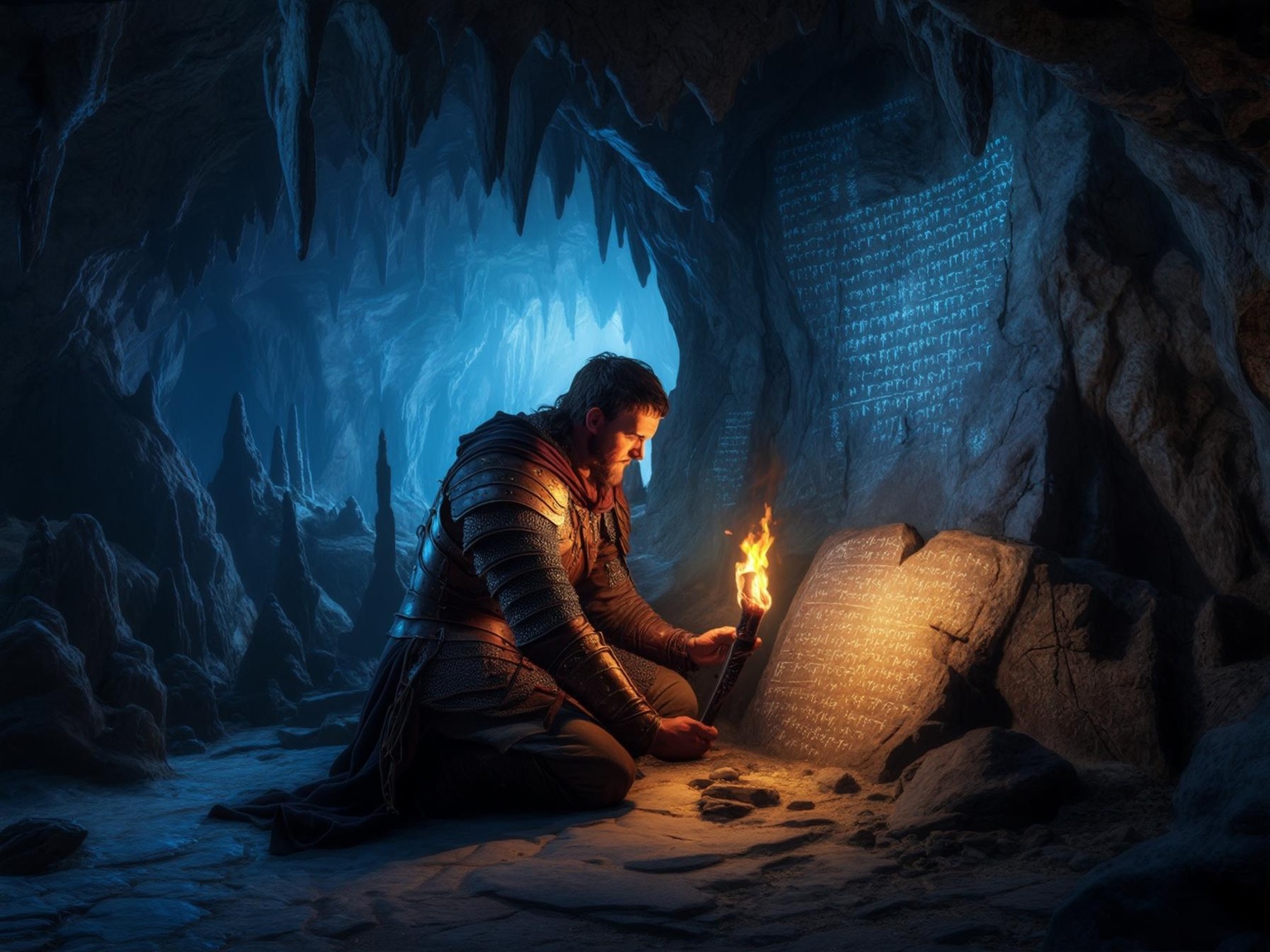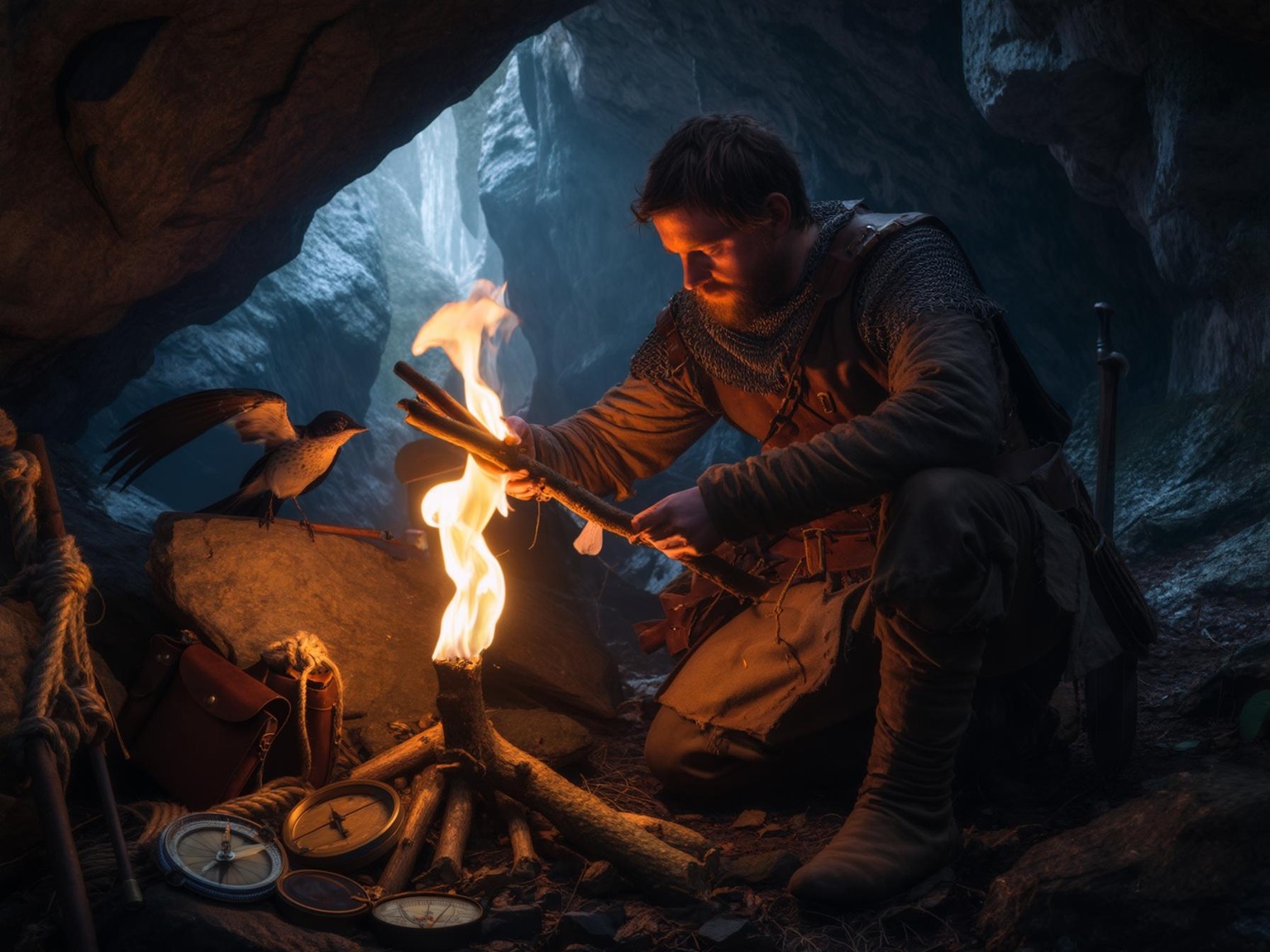From specialized gear loadouts to complex faction relationships with cave spirits, medieval explorers developed systems that modern LitRPG fans would instantly recognize. Their methods might surprise you.
The Medieval Explorer Class
Picture a group of specialized adventurers preparing to delve into the darkness of medieval caves. These weren’t just random thrill-seekers – they were masters of their craft who developed what we’d now recognize as a complete progression system. Their expertise went far beyond just carrying torches and hoping for the best.
Core Stats and Training
The path to becoming a cave explorer started with developing three essential abilities. High perception came first – the keen awareness needed to navigate in near-total darkness and spot deadly hazards before it was too late. These explorers developed specific techniques to enhance their dark vision, including specialized breathing methods that improved oxygen flow to their eyes.
But sharp eyes alone wouldn’t keep you alive underground. The brutal environmental challenges of medieval caves demanded solid constitution. Explorers built their resistance through gradual exposure to cold, dampness, and toxic air pockets. This wasn’t just about being tough – it was systematic training that would feel right at home in any modern RPG.
Intelligence played its part too. Underground exploration presented complex geological and navigational puzzles that no amount of brute force could solve. Successful explorers studied cave formations, learned to read water flow patterns, and mastered the behavior of air currents. Each new piece of knowledge was hard-won and carefully preserved.

The Art of Equipment
What these explorers carried wasn’t just gear – it was a carefully calculated loadout where every piece served multiple purposes. Their leather armor struck a crucial balance between protection and mobility. Each explorer carried not just one light source, but several backups, because in the depths, light meant life. They developed specialized marking tools that could work on wet stone, helping them map their progress and warn others of dangers ahead.
The most experienced explorers unlocked access to advanced equipment through years of practical knowledge. They crafted intricate rope systems specifically designed for vertical cave exploration, developed testing methods for air quality, and created mapping tools that worked in the unique challenges of underground navigation.
Survival Mechanics
Medieval explorers approached survival with a systematic precision that would impress any modern game designer. They developed layered safety protocols and progressive skill advancement that turned staying alive underground into an art form.

The Living Warning System
Their most fascinating innovation? The bird detection system. These weren’t just pets – they were living status effect detectors. Canaries and other birds were carefully trained to respond to specific environmental hazards, offering early warnings through behavior changes. It was essentially a medieval heads-up display, warning explorers of dangers before they became lethal.
Handlers developed deep bonds with these avian companions, learning to read subtle changes in their behavior that could signal anything from bad air to unstable tunnels. Each bird required specific training and handling skills, creating what amounted to a complex companion system.
Mastering Cave Craft
The explorers’ approach to crafting showed similar sophistication. Consider their fish-oil torches – these weren’t just light sources, but multi-purpose tools providing both illumination and emergency sustenance. Each torch crafted represented a skill point invested in survival, with higher-quality materials and better crafting techniques producing superior results.
Resource management became a crucial skill. Explorers learned to create emergency tools from limited materials, repair equipment in challenging conditions, and make critical decisions about when to use – or save – their precious resources.
Spirit Relations
Perhaps the most intriguing aspect of medieval cave exploration was their interaction with what they called “knockers” – cave spirits that operated on what was essentially a complex reputation system. These supernatural entities demanded regular offerings, creating a fascinating dynamic between the physical and spiritual aspects of exploration.

The Reputation Game
Explorers who maintained positive standing with these cave spirits reported remarkable benefits – better luck with their expeditions, fewer cave-ins, and more frequent discoveries of valuable resources. But this wasn’t just superstition; it was a carefully managed system of relationships that required consistent attention and strategy.
Those who neglected their offerings faced increasing difficulties – equipment seemed to break more often, passages became harder to navigate, and valuable discoveries grew rare. It was, in essence, a reputation grind with very real consequences.
Spirit Interactions
The most successful explorers developed complex systems for managing their spirit relationships. They tracked which offerings worked best in different areas, noted seasonal changes in spirit behavior, and passed this knowledge down through generations. Some even claimed to develop special abilities through positive spirit relationships, from enhanced navigation skills to the ability to sense impending cave-ins.
This sophisticated approach to spirit interactions created what amounted to a complex faction system, complete with reputation levels, special rewards, and unique challenges. It’s a system that would feel right at home in any modern RPG.
Ready to explore your own path through history’s first progression system?
Begin your journey with a free copy of “Arise” and experience how historical dungeon delving mechanics have evolved into modern LitRPG adventures.

